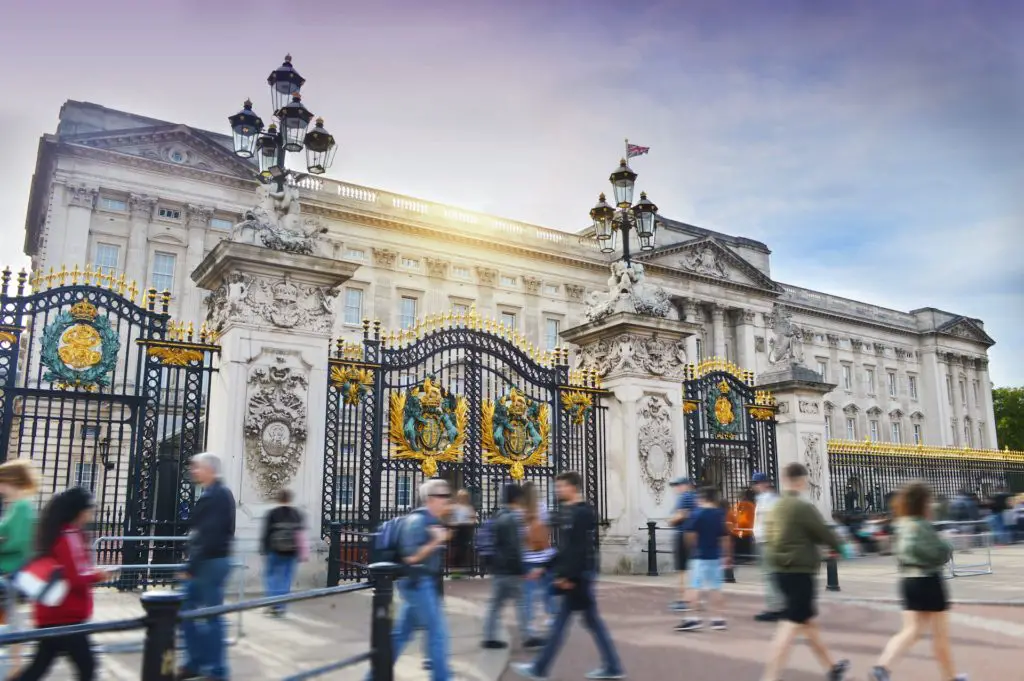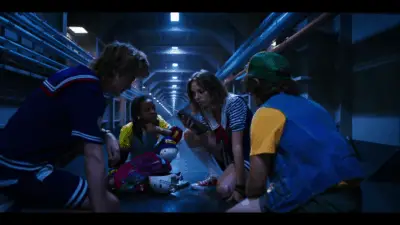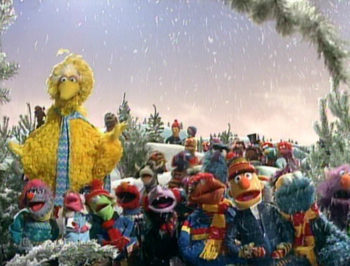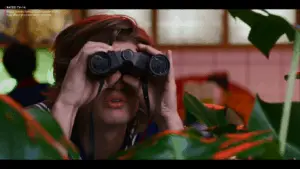
For the queen and the Royal Family, every decade through the 20th and 21st centuries was notable, but the 80s may be one of the most significant.
The 1980s gave us two royal weddings, four royal births, an extremely public marriage breakdown, big changes in Canada–even a palace break-in and threats to the Queen.
Wherever you are in the world reading this, and regardless of what you think about the entire royal family, the death of Queen Elizabeth is still significant as a historical event and one that can’t be ignored.
No matter your feelings toward the royal family, this moment is still notable as we are living through a significant time in history. I’m going to go out on a limb here and say there’s probably no one listening to this podcast right now that remembers The Queen’s coronation. And definitely, no one who’s ever seen another one.
This is the true, longest reigning monarch in human history. Louis the XIV is technically longer, but became king as a child and wasn’t a true ruling monarch. You’ve been alive for the reign of someone who was Queen for 30% of the entire history of the United States. That’s kind of hard to wrap your head around. It almost feels like living through another time and we’ve been witness to a family and house that can trace its lineage back over 1000 years. I genuinely can’t tell you the names of my great great grandparents. That’s part of the historical significance and it’s worth looking at.
If you’re new here, I’m Canadian but also grew up in England. I’ve always been aware of the prominence of the royal family. As a young kid, I couldn’t understand having to wait until the Queen’s speech before we were able to open presents on Christmas day. That’s a tough pill to swallow when you’re used to diving headfirst into the Christmas tree at 6:45 am every December 25th.
The Royal Family in the 1980s: A New Era Begins
So I mentioned how every era and decade always seems significant for the Royal Family, but if you were alive during the 80s, you know how big the Royal Family was, and there really was no way to ignore it. This is a time when they may have had more exposure than at any other point in human history.
Going into the 80s, because of the increase of media exposure that was taking place; through network TV, cable, tabloids, the growth of 24-hour news channels, and the power of Princess Diana, this is an era where the Royal Family was possibly as prominent as they’ve ever been.
But let’s set the stage as we head into the 80s. The 1960s and 70s were a pretty tumultuous time for the Royal Family. If you’ve watched the brilliant series, The Crown, you’ve seen much of this. This was a period when the royal family was trying to humanize itself a bit better. In a pretty groundbreaking move at the time, the Royal Family allowed a documentary to be filmed about them in 1969. They wanted to use the power of television to show another side of them. And the public loved it as 30 million people tuned in to watch. The documentary also gave the queen the chance to introduce her 21-year-old son: Charles.
But in the late 70s, some scandal emerged involving Princess Margaret and an affair. The 1970s was also the time when Charles met Camilla Shan, who later become Camilla Parker-Bowles. She was at first seen as too much of a commoner and not an ideal match for someone who would one day inherit the crown.
The story of these two would dominate the press for decades to come.
As we entered the 1980s, things started out on quite a dire note. Lord Mountbatten, the uncle of Prince Phillip–who was also a mentor to Prince Charles–was assassinated.
This event left a significant void in Prince Charles’ life. He was also facing pressure–from his family and the public–to finally settle down. He thought he had found that with Camilla Shan, but it was clearly not meant to be.
While at a party in 1980, Charles met Diana Spencer. She was the younger sister of the person he was currently dating. Diana had been working as a nanny, took cooking courses, as a dance instructor, and a nursery school assistant. So just a personal story. Besides growing up in England, I also went back there to live for a few years in the mid-2000s.
I worked at a pub in London that was in an area called Pimlico, just a few minutes’ walk from the nursery school Diana worked at. This was the area where some of those first images of Diana emerged when the world found out she was seeing Charles. I walked through this area every day on my way to work and there was just something eerie about it. It’s hard to explain, but it was almost like her presence was still there. I think it was mainly about the significance of this street and location that always made it feel a bit surreal.
Charles was intrigued by Diana, as she seemed to be one of the few people concerned how he was dealing with the death of his close mentor.
The two started dating, and things progressed quickly. Diana was actually born into British nobility. The Spencer family had been connected to the Royal Family for decades. Diana’s grandmothers had even been ladies-in-waiting for the Queen Mother. Diana would be the fit the Royal Family wanted. The two were quickly engaged, making it public on February 24th, 1981.
They set the wedding for July 29th–of that year. Now, I don’t know if you’ve been married or been involved with wedding planning, but that is kind of a quick turnaround. Actually, it’s ridiculously fast. This would be a fast turnaround time if you were getting married at a Chapel o’ Love, let alone for one of the biggest weddings the world would ever see.
The Wedding of the Century
If you are old enough to remember the early part of the 80s, I’m sure you remember the Wedding of the Century. This was the event of all events and one of the most notable of the entire 1980s. It seemed like a fairy tale come to life. Diana felt like that fairytale princess and captured the attention of not just the British public, but of much of the world.
This is an incredible amount of pressure put on one individual, but the wedding was a huge morale booster for the entire country. The early 80s was a period of high unemployment in the UK, and the Royal Wedding would be that small spark of joy. And the whole wedding did feel like something straight out of a movie.
Diana arrived at St. Pauls’s Cathedral in a horse-drawn carriage. The wedding dress had a 25-foot-long train. Despite the fairytale appearance of the dress, it still had some 1980s influence to it as it featured very large puffy sleeves. Enter your Seinfeld jokes….now.
But the fairytale aspect of the Royal Wedding captured the imagination of the entire world as close to a billion people in 70 different countries tuned into watch. As of right now, this makes it one of the most-watched television events in human history. More people watched this wedding than watched the moon landing.
Here are a few notable events you may not remember from the Wedding of the Century:
- Diana flubbed part of the vows, calling Charles, ‘Phillip.’ (Though that is his middle name)
- Here’s one of the most interesting ones: Diana also broke from tradition, refusing to say the word ‘obey’ in the vows. This was a controversial moment as since 1662, the Anglican Book of Common Prayer used the line “to love, cherish, and to obey, to death do us part.” No Royal Woman had ever altered the traditional wedding vows before. Kate Middleton left it out when she married Diana’s son, William, as did Meghan Markle when she married Harry.
- Charles and Diana actually forgot to kiss during the ceremony and made up for it on the balcony at Buckingham Palace
Diana Mania
Diana was already creating a global stir, but this grew to the next level when she became an official Princess. Diana was a breath of fresh air to the usual stuffy royal family. The Princess of Wales was modern and glamorous and soon became a fashion icon. They swarmed everywhere her she went. If you think paparazzi hound celebrities today, just go back and look at videos of Diana at any event she went to. The number of photographers and camera flashes is just astonishing. I really don’t think we’ve ever seen anything like it before or since. It was this relentless attention by the Paparazzi that would, unfortunately, lead to her tragic death years later.
It’s hard to articulate the fame Diana had. Everyone today seems desperate to be famous, but this was all dropped in her lap and brought her to a level of fame I don’t think the world had really seen before. Because of the growth of media coverage in the 1980s, her every move was captured. This only escalated the world’s awareness of her.
People like Madonna and Michael Jackson were extraordinarily famous but couldn’t hold a candle to Diana. Michael Jackson shrank when he met her and the king of pop looked quite insignificant alongside her. There’s fame, and then there’s their royal fame, and Diana took it to a level that may never be duplicated.
Here are some of the notable moments with the Princess of Wales in the 1980s:
- William was born on June 21st, 1982, and Harry was born on September 15th, 1984. In between the two births, Charles and Diana undertook a massive tour of Australia. If you want to see swarms of people, check the footage of Australia–and they had all come out to see Diana.
- One of her most famous was dancing with John Travolta at the White House in 1985. Also in 1985, Diana actually attended the Back to the Future premiere.
- As the HIV crisis grew in the late 80s, people felt a lot of fear. Diana rejected the stigma about touching someone with AIDS without gloves–and made it a point to do so. This was 1987 and our understanding of the disease was in its infancy and people just didn’t know what to think about the acts she was making. She made it a point to engage with people struggling with the disease and focused on compassion and not fear. She would hug children sick with HIV and AIDS, showing the rest of the world what a more ideal approach should look like.
But it Wasn’t All Just Diana
Besides her skyrocketing popularity, there were other significant moments happening with the Royal Family in the 1980s. One big one was “the other wedding.” Prince Andrew met Sarah Ferguson at a party in 1985. They were engaged by early 1986 with a wedding set for July 23rd of that year. The wedding was still a big event but just couldn’t hold a candle to the Wedding of the Century.
There were fewer people in attendance, fewer people in the street, and fewer people were watching it. But it was still an enormous attraction, with some 500 million people tuning in. Sarah Ferguson or Fergie was immensely popular. But she was no Diana.
For Royal Births, The Queen welcomed her first grandchild in 1981. Zara Phillips was the daughter of Princess Anne. The last royal birth of the decade would take place on August 8th, 1988, when Princess Beatrice was born to Andrew and Sarah; the Duke and Duchess of York.
Also in the 80s was a pretty bad public relations disaster for the Royal Family. People in England may remember the show “It’s a Royal Knockout” from 1987. “It’s a Royal Knockout” was a charity event held on BBC 1, on June 19th, 1987. Some of the younger members of the Royal Family, including Fergie, Prince Edward, Prince Andrew, and Princess Anne, took part, along with a few celebrities, including Margot Kidder, John Travolta, and Meatloaf.
This was an attempt to make the family look more “relatable.” It’s a Knockout” was a game show where towns competed against each other–in medieval costumes– in games and obstacle courses. Picture Fun House meets Medieval Times.
The Royals–in medieval costume–would act like cheerleaders encouraging the teams. Despite huge ratings, the show was lambasted by critics. Many saw it as very embarrassing and even the Queen thought it wouldn’t be a great idea. The Royals were trying to act like “commoners,” but many saw it as hurting the dignity of the Royal Family.
Prince Edward particularly came across us as ungrateful and difficult with the press. You can still watch the entire show on YouTube and it’s not the worst thing you’ll ever see. In fairness, it was for charity, but the intention of the event seemed to backfire. It was like a bad Monty Python sketch. The British press isn’t the most accommodating of people and some say that “It’s a Royal Knockout” was the moment where respect for the Royal Family started to degrade.
I made myself watch this and “It’s a Royal Knockout” is pretty brutal. It makes the Star Wars Holiday Special look like Live Aid at Wembley. My favorite part is Rowan Atkinson as the Lord of Not and when Tom Jones wearing a leotard falls in the water trying to cross some floating platforms.
The Palace Break-in
The same year that Diana and Charles were married, two frightening moments happened involving the Queen. In June 1981, six shots were fired at her while riding a horse down the mall. A 17-year-old–unable to get a license for a real gun–fired blanks at the Queen. This caused obvious panic, startling the horses, but revealed the composure of the Queen who was even able to control the panicked horse. Also, in 1981, another attempt was made while she was in New Zealand.
Then in the summer of 1982, the Queen woke up to find someone in her bedchamber. This wasn’t the first time Michael Fagan had broken into Buckingham Palace, but this time, he got frighteningly close to the queen. Police, believing the alarms Fagan tripped were accidents, did not react.
Only the two of them know what really happened, but some accounts say the Queen engaged with him, casually talking, giving security enough time to get there. Fagan says she ran to get help. But either way, the Royal Security was of course heavily criticized and this event led to major changes in palace and royal residence security.
The Canadian Change
Here in Canada, the 1980s were a significant time period when it came to connections with Britain and the Royal Family. This is when the Canada Act, or Constitution Act of 1982, came into play. Up to that point, The UK still has the power to legislate for Canada, and, legally, we were still a self-governing British dominion.
When the Canada Act was passed in 1982, it ended British authority and gave the authority to the federal and provincial governments for amending the constitution. The Queen declared the proclamation on April 17th. The British parliament no longer had any role in Canadian law and the Canadian Charter of Rights and Freedoms was implemented.
Things Fall Apart
We all know how everything turned out, but heading into the second half of the 80s, things between Charles and Diana didn’t seem as perfect as their fairytale romance and wedding indicated. There were rumors of alleged infidelity. There were talks that Diana had been having an affair and Charles was seeing Camilla Parker Bowles.
In a country that hung on the Royal Family’s every move, keeping issues under wraps became increasingly difficult. By 1987, the press picked up the cracks in the marriage. They could see the two were not as close as they had been. They just didn’t look happy to be around each other. What was going on behind the scenes? Maybe we were all just mistaken and things were fine.
We know now about Diana’s true unhappiness, but she kept that stiff upper lip in public. But with all the rumors swirling about Charles and Camillia, how long could she keep this up for? In 1989, Diana took matters into her own hands and confronted Camilla about what was going on with Charles.
As the 80s became the 90s, more information leaked out. But Diana seemed to be behind it. Today, we would probably call this “controlling the narrative,” Diana conducted secret interviews, which later became a book. No one knew the stories were coming from Diana, and many were quick to brush off any scandals. or allegations.
What seemed like a fairytale in the 80s was becoming a nightmare going into the 90s. We all know how this story turns out and if you want to dive deeper into the tragic death of Diana Princess of Wales, check out The History of the 90s podcast wherever you get your podcasts.
But it wasn’t just the Prince and Princess of Wales facing turmoil in the 1980s. The first royal couple to announce their marriage issues were Princess Anne and her husband, Mark Phillips. In 1989, they announced their separation. And the Duke and Duchess of York also experienced marriage issues. Their marriage would end in the early 90s, but things started to fall apart in the 80s.
Over the course of the 1980s, three royal marriages all fell apart. This was a double-edged sword. The marriage issues within the family showed they were human and, dare I say, somewhat relatable. This elite family still had to deal with the same issues affecting everyone else. But it also appeared as if their family was in disarray and the public may have begun to lose a little respect.
Final Thoughts on the Royal Family During the 1980s
But ultimately, the story of the Royal Family in the 1980s is really the story of Diana. Yes, a lot of other monumental moments happened that involved other members, but Diana was front and center. She captured the imagination of the entire world during a time when media exposure was at heights never before seen.
Could you imagine what it would have been like if social media had existed during the time of Diana? As popular as celebrities may appear today, they really can’t even hold a candle to the Princess of Wales. This is not only one of the most notable figures of the 80s and 20th century, but in modern human history. Her life in particular seems Shakespearean. It’s like something out of an ancient Greek tragedy, but it was very real, and we watched it all unfold before our very eyes. The crazy thing? Diana was only 36 when she died.
But this whole topic of the Royal Family–and notably Diana–is ultimately about something bigger. And that theme is, what are the stories that remain? What are the moments and people that will be remembered? How will our particular era in human history be looked back on?
Hundreds of years from now, what will stay with us? Will the tragic story of a beloved Princess turn into something of a modern, yet tragic fairytale? Will those events evolve into something fictitious more than a true story? Even now, the entire story of Diana doesn’t even seem real–and we all lived through it.
Our species is shaped by storytelling. Whether it was sitting around a fire millennia ago, or you listening to these digital stories I’m telling through a computer you can put in your pocket. Stories are what bond and connect us, and we’ve lived through a time that will provide stories for generations to come.



